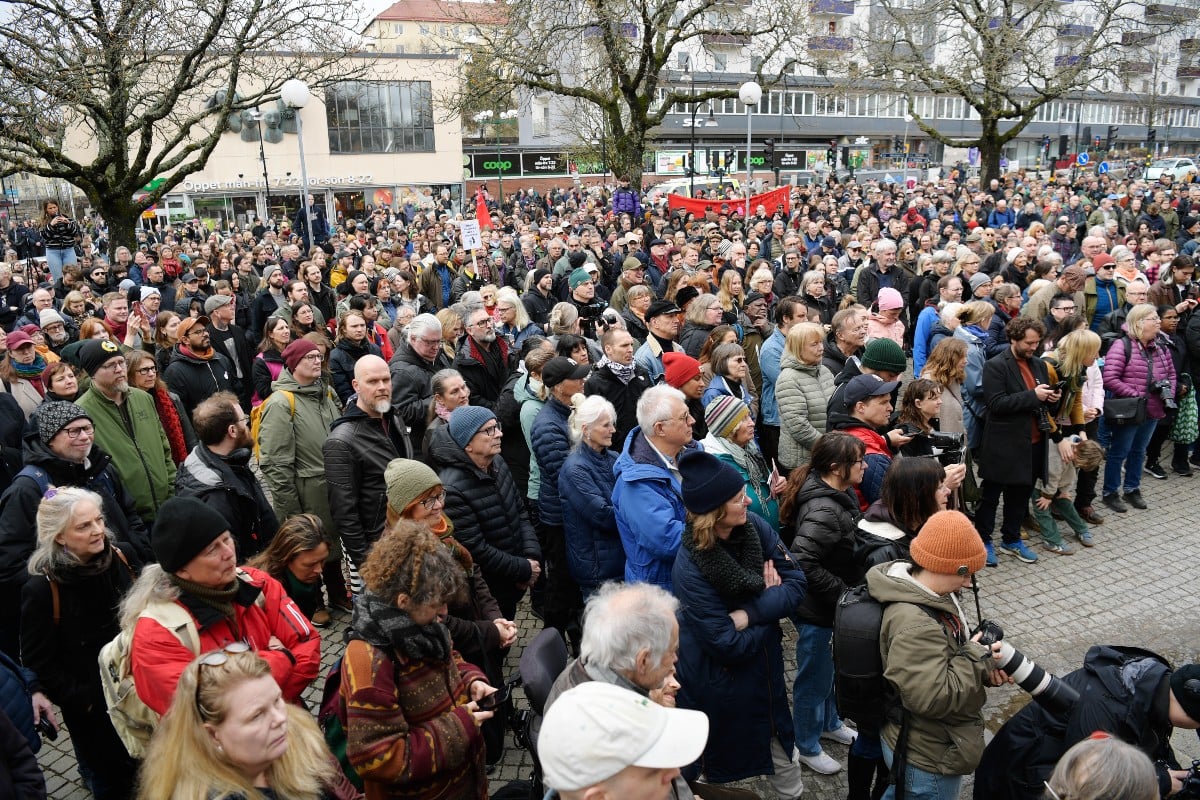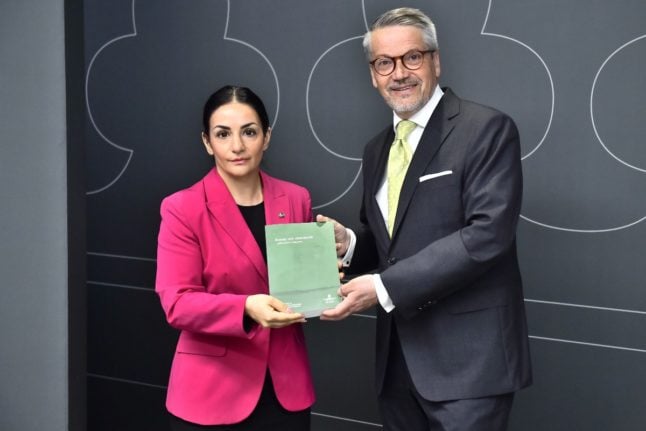The demonstration, which was organised by the Left Party and the Green Party together with Expo, an anti-extremist magazine, was held outside the Moment theatre, where masked assailants attacked a lecture organised by the two parties on Wednesday.
In the attack, the assailants – described as Nazis by Expo – let off smoke grenades and assaulted several people, three of whom were hospitalised.
“Let’s say it how it is: this was a terror attack and that is something we can never accept,” said Amanda Lind, who is expected to be voted in as the joint leader of the Green Party on Sunday.
She said that those who had attended the lecture had hoped to swap ideas about how to combat racism.
“Instead they had to experience smoke bombs, assault and were forced to think ‘have they got weapons’?. The goal of this attack was to use violence to generate fear and silence people,” she said.
EXPLAINED: What we know about the attack on a Swedish anti-fascist meeting

Nooshi Dadgostar, leader of the Left Party, said that that society needed to stand up against this type of extreme-right violence.
“We’re here today to show that which should be obvious: we will not give up, we will stand up for ourselves, and we shall never be silenced by racist violence,” said said.
Sofia Zwahlen, one of the protesters at the demonstration, told the DN newspaper that it felt positive that so many had turned up to show their opposition to the attacks.
“It feels extremely good that there’s been this reaction, that we are coming together. I’m always a little worried about going to this sort of demonstration. But this feels safe.”



 Please whitelist us to continue reading.
Please whitelist us to continue reading.
Member comments